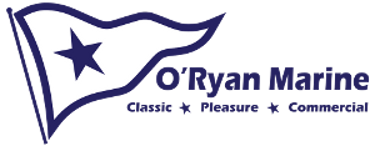Like us on Facebook for a service discount!
Washington State Minimum Boating & Safety Equipment Requirements
To operate a boat in the State of Washington, certain equipment is required by law, such as personal flotation devices (PFDs), sound producing devices, fire extinguishers, visual distresssignals, ventilation systems and navigational lights. Specific requirements are outlined below. Failure to comply with these requirements can subject a boat operator to substantial monetary fines.
Personal Flotation Devices
Vessels under 16 feet long, and canoes and kayaks of any length, must have one USCG approved Type I, II, or III PFD of the proper size for each person on board. Vessels 16 feet or longer, except a canoe or kayak, must have one USCG-approved Type I, II, or III wearable PFD of the proper size for each person on board and, in addition, one Type IV throwable PFD.
A USCG-approved Type V PFD may be carried in place of any required PFD if it is approved for the activity in which the vessel is engaged and is being worn. All PFDs required must be readily accessible and in good and serviceable condition.
Mandatory PFD Usage
Children 12 years old and younger must wear a USCG-approved PFD at all times when underway in a vessel under 19 feet in length, unless in a fully enclosed cabin. USCG approved life jackets must be worn by the operator and all passengers on personal watercraft, as well as anyone being towed behind a vessel.
Sound Producing Devices
A sound-producing device is required on all waters. It is essential during periods of reduced visibility. It must be audible for one-half mile. The sound-producing device requirements are:
- Vessels less than 65.6 feet (20 meters) in length, which includes PWCs, are required to carry on board a mouth, hand, or power-operated whistle or horn, or some other means to make an efficient sound signal.
- Vessels 65.6 feet (20 meters) or more in length are required to carry on board a whistle or horn, and a bell.
- No vessel may be equipped with a siren, except vessels used by law enforcement officers.
Fire Extinguishers
Motorboats with no fixed, fire-extinguishing system in the machinery space and which are:
- Under 26 feet (7.9 meters) in length must carry one hand portable extinguisher;
- Twenty-six feet (7.9 meters) but under 40 feet (12 meters) in length must carry two hand portable extinguishers;
- Forty feet (12 meters) or longer must have on board three hand portable extinguishers.
Motorboats with a fixed extinguishing system in the machinery space and which are:
- Less than 26 feet (7.9 meters) need not carry a hand portable extinguisher;
- Twenty-six feet (7.9 meters) or longer but under 40 feet (12 meters) must have on board one hand portable extinguisher;
- Forty feet (12 meters) or longer must have on board two hand portable extinguishers.
All fire extinguishers must be USCG-approved, fully charged and in serviceable condition. Vessels with an outboard motor under 26 feet (7.9 meters) in length and of open construction are exempt from these requirements. The fire extinguishers required by this section are Class B-I, however, one Class B-II may be substituted for two Class B-I extinguishers.
Visual Distress Signals
All boaters must carry the appropriate visual distress signals (VDS's) when operating in coastal waters. Vessels 16 feet (4.9 meters) or longer cannot be operated unless they carry devices suitable for day and night use, or devices suitable for both day and night use. Vessels under 16 feet (4.9 meters) cannot be operated between sunset and sunrise unless they carry VDS's appropriate for night use.
VDS's must be legibly marked with the USCG approval number, readily accessible, in serviceable condition, and if marked with an expiration date, it cannot be expired.
If a vessel has a VDS requiring a launcher to activate the signal, it must also have on board a launcher approved by the U.S. Coast Guard. A VDS must not be displayed on Washington waters only in situations where assistance is needed due to immediate or potential danger to the persons on board.
Ventilation Systems
An onboard gasoline engine may not be operated without proper ventilation. Each vessel compartment with a permanently installed gasoline engine with a cranking motor must be open to the atmosphere, or ventilated by a natural ventilation system and a mechanical exhaust blower system.
A natural ventilation system must be approved for use by the USCG and must include a supply opening or duct from the atmosphere or from a ventilated compartment, and an exhaust opening into another ventilated compartment or duct to the atmosphere. Each exhaust opening or duct must originate in the lower third of the compartment; each supply opening or duct and each exhaust opening or duct in a compartment must be above the normal accumulation of bilge water.
Ventilation Exhaust Blower Warning Label
Each vessel required to have an exhaust blower must have a label located near each ignition switch, in plain view of the operator, with the following information:
"WARNING - GASOLINE VAPORS CAN EXPLODE. BEFORE STARTING ENGINE, OPERATE BLOWER FOR FOUR (4) MINUTES AND CHECK ENGINE COMPARTMENT BILGE FOR GASOLINE VAPORS."
Backfire Flame Control
Backfire flame arrestors are needed on each carburetor of all power boats except outboards fueled with gasoline. Backfire arrestors are designed to prevent the ignition of gasoline vapor when engines backfire. They must meet U.S. Coast Guard approved standards, SAE J-1928 or UL 1111 standards. The information about the appropriate standard must be stamped on the flame arrestor.
Navigational Lights
Washington State does not have lighting requirements that are in addition to USCG regulations. The required navigational lights must be displayed during the hours from sunset to sunrise, and during times of restricted visibility.
Marine Sanitation Devices (MSD's)
The State of Washington does not currently have state-specific regulations governing MSDs that are in excess of USCG regulations. All vessels operated in the waters of this state are required to adhere to USCG MSD regulations.
